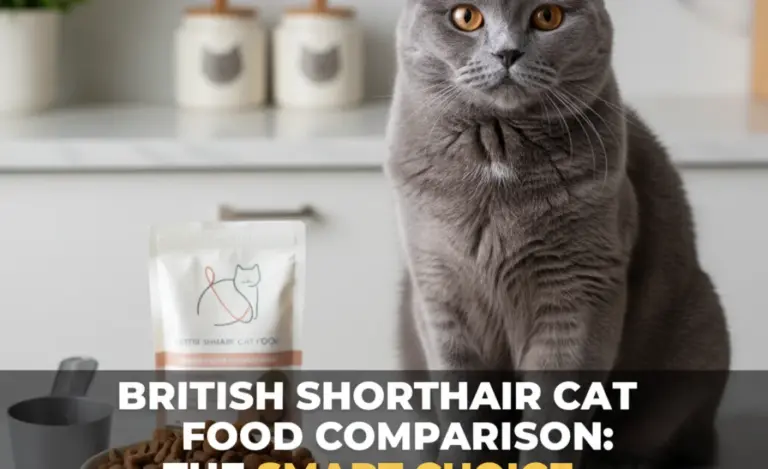British Shorthair Picky Eater Meal Ideas: The Secret?
Quick Summary: Is your British Shorthair turning up its nose at dinner? Don’t worry! Picky eating is common in this breed. Try warming their food slightly to enhance the aroma, offering small, frequent meals, and experimenting with different textures and flavors. Consider puzzle feeders to make mealtime more engaging, and always consult your vet to rule out underlying health issues. With patience and a bit of creativity, you can find meals your British Shorthair will love!
Is your usually charming British Shorthair suddenly snubbing its food bowl? You’re not alone! Many owners of these delightful cats find themselves facing the picky eater problem. It can be frustrating and concerning when your furry friend refuses to eat, leaving you wondering if they’re getting enough nutrients. But don’t panic. British Shorthairs are known for their discerning palates, and there are plenty of ways to tempt them.
This guide will walk you through simple, effective strategies to transform your picky eater into a happy, healthy diner. We’ll explore meal ideas, feeding techniques, and tips to address any underlying issues. Get ready to say goodbye to mealtime stress and hello to a purrfectly satisfied kitty!
Understanding the Picky Eater
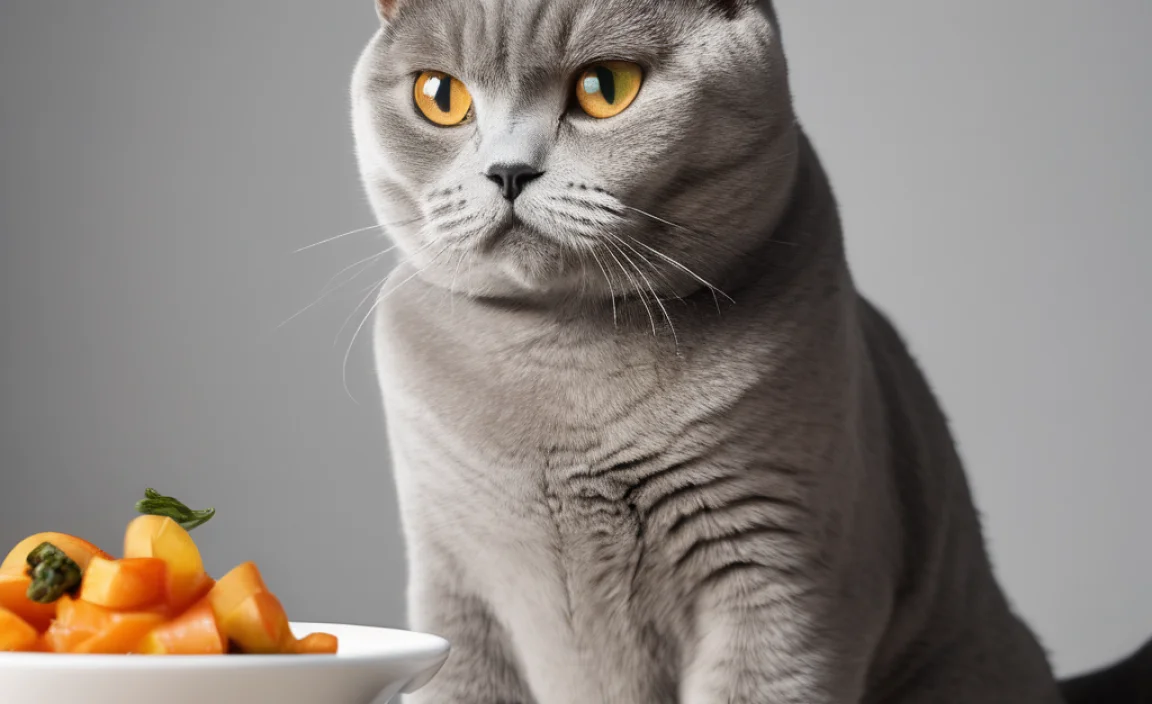
Before diving into meal ideas, let’s understand why your British Shorthair might be a picky eater. Several factors can contribute to this behavior, and identifying the root cause is the first step to solving the problem.
Possible Causes of Picky Eating
- Breed Predisposition: British Shorthairs, like many pedigree breeds, can be more particular about their food preferences.
- Early Experiences: What your cat ate as a kitten can influence their adult tastes. If they were only exposed to one type of food, they might be hesitant to try others.
- Routine: Cats thrive on consistency. Changes in feeding schedules, food brands, or even the location of their bowl can disrupt their appetite.
- Stress or Anxiety: Environmental stressors, such as a new pet, loud noises, or changes in the household, can affect a cat’s eating habits.
- Health Issues: Dental problems, digestive upset, or other underlying health conditions can cause a loss of appetite. Always consult your veterinarian to rule out medical causes.
- Food Quality: Cats can detect low-quality ingredients or stale food. Ensure you’re feeding a high-quality diet and storing food properly.
Ruling Out Medical Issues
It’s crucial to rule out any underlying health issues before assuming your cat is simply being picky. Schedule a visit to your veterinarian for a thorough check-up. They can assess your cat’s overall health, examine their teeth, and perform any necessary tests to identify potential medical problems.
According to the Cornell Feline Health Center, a sudden change in appetite should always warrant a veterinary visit. Early diagnosis and treatment can prevent more serious health complications.
Meal Ideas to Tempt Your British Shorthair
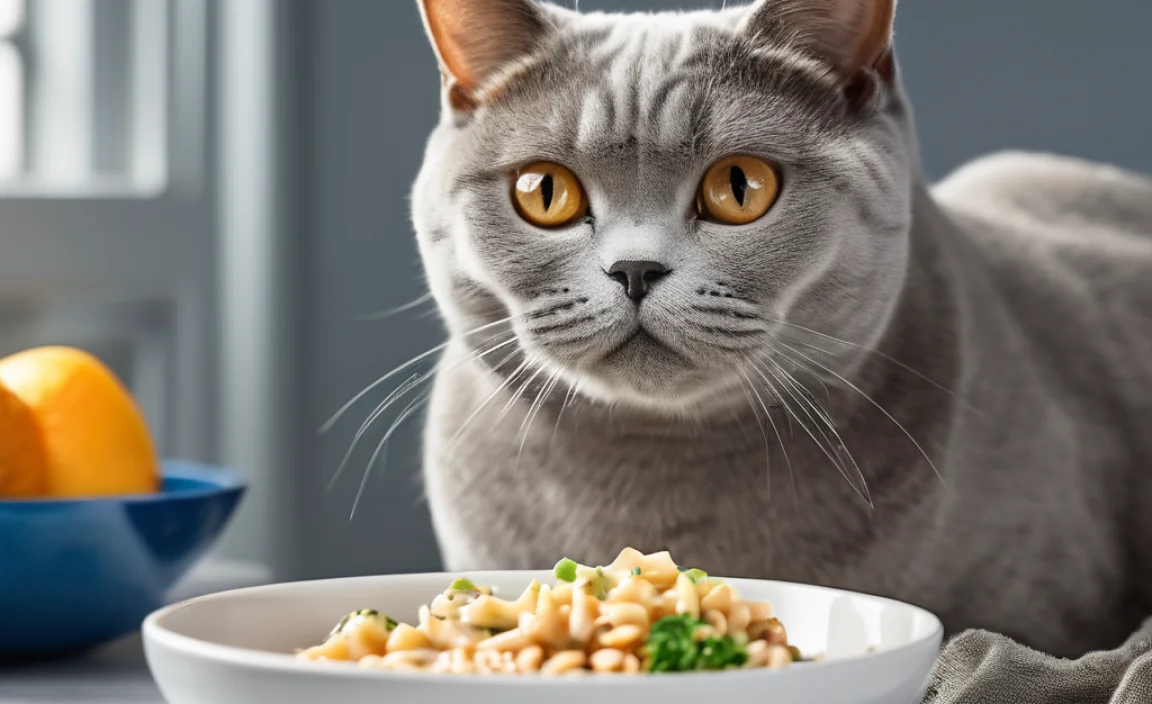
Now that we’ve explored the potential causes of picky eating, let’s get to the fun part: meal ideas! Here are some strategies and recipes to entice your British Shorthair and make mealtime more appealing.
Warming the Food
Cats have a highly developed sense of smell, and the aroma of food can significantly impact their appetite. Warming the food slightly can enhance its smell and make it more enticing.
How to do it:
- Place a small portion of wet food in a microwave-safe dish.
- Microwave for 5-10 seconds, until slightly warm.
- Always test the temperature before serving to ensure it’s not too hot.
Experimenting with Textures
Some cats prefer wet food, while others prefer dry kibble. Your British Shorthair might have a specific texture preference. Try offering a variety of textures to see what appeals to them.
- Wet Food: Pate, morsels in gravy, shredded varieties.
- Dry Food: Different shapes and sizes of kibble.
- Mix-ins: Add a small amount of water or broth to dry food to soften it.
Introducing New Flavors Gradually
Cats can be suspicious of new foods, so it’s important to introduce them gradually. Start by mixing a small amount of the new food with their current food, and gradually increase the proportion over several days.
How to do it:
- Day 1-2: Mix 25% new food with 75% old food.
- Day 3-4: Mix 50% new food with 50% old food.
- Day 5-6: Mix 75% new food with 25% old food.
- Day 7: Offer 100% new food.
High-Quality Protein Sources
Cats are obligate carnivores, meaning they require a diet rich in animal protein. Choose foods that list a specific animal protein source (such as chicken, fish, or beef) as the first ingredient. Avoid foods that are high in fillers or plant-based proteins.
Good Protein Sources:
- Chicken
- Turkey
- Fish (salmon, tuna, whitefish)
- Beef
- Lamb
Homemade Meal Ideas (with Vet Approval)
If you’re feeling adventurous and want to ensure the highest quality ingredients, you can consider preparing homemade meals for your British Shorthair. However, it’s essential to consult with your veterinarian or a veterinary nutritionist to ensure the diet is nutritionally balanced.
Recipe Example (Consult Vet Before Use):
| Ingredient | Amount | Notes |
|---|---|---|
| Cooked Chicken Breast | 3 oz | Shredded or diced |
| Cooked Brown Rice | 1 oz | Plain, no seasoning |
| Cooked Carrots | 0.5 oz | Diced |
| Fish Oil Supplement | As directed by vet | For Omega-3 fatty acids |
Important Considerations:
- Always cook ingredients thoroughly to eliminate bacteria.
- Avoid adding salt, spices, or other seasonings that can be harmful to cats.
- Store homemade meals in the refrigerator and use within 2-3 days.
Commercial Food Options
If homemade meals seem daunting, there are plenty of high-quality commercial cat food options available. Look for brands that are specifically formulated for indoor cats or sensitive stomachs, as these often contain ingredients that are easily digestible and palatable.
Recommended Brands (Consult Vet Before Switching):
- Royal Canin British Shorthair Adult Dry Cat Food
- Purina Pro Plan Focus Sensitive Skin & Stomach
- Blue Buffalo Sensitive Stomach Recipe
Feeding Strategies for Picky Eaters

Beyond the specific meal ideas, how you present the food can also make a big difference. Here are some feeding strategies to try:
Small, Frequent Meals
Instead of offering one large meal per day, try dividing the daily ration into several smaller meals. This can be especially helpful for cats with sensitive stomachs or those who tend to graze throughout the day.
Puzzle Feeders
Puzzle feeders are a great way to make mealtime more engaging and stimulating. These feeders require your cat to work for their food, which can help to alleviate boredom and encourage them to eat more.
Types of Puzzle Feeders:
- Rolling Feeders: Dispense kibble as the cat rolls them around.
- Interactive Bowls: Have obstacles that the cat must navigate to reach the food.
- Hunting Feeders: Simulate a hunting experience by hiding small portions of food in different locations.
Clean Bowls and Fresh Water
Cats are fastidious creatures, and they appreciate a clean eating environment. Make sure to wash your cat’s food and water bowls daily with soap and water. Always provide fresh, clean water in a separate bowl.
Creating a Calm Eating Environment
Cats are easily stressed, and a noisy or chaotic environment can discourage them from eating. Choose a quiet, peaceful location for your cat’s food bowl, away from high-traffic areas or potential stressors.
Avoid Free-Feeding
While it might seem convenient to leave food out all day, free-feeding can actually contribute to picky eating. When food is constantly available, cats may become less interested in it and more likely to develop finicky habits. Instead, offer meals at specific times of the day and remove any uneaten food after 20-30 minutes.
Foods to Avoid
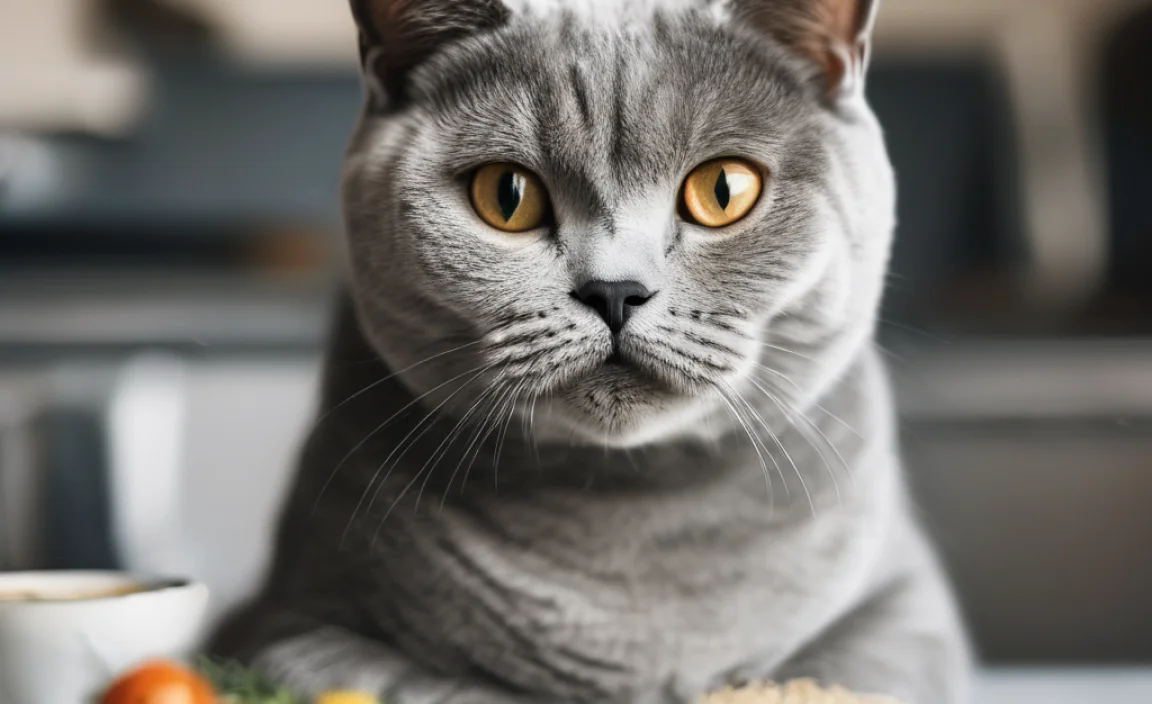
While experimenting with different meal ideas, it’s important to be aware of foods that are toxic or harmful to cats. Avoid feeding your British Shorthair the following:
- Chocolate
- Onions and Garlic
- Grapes and Raisins
- Alcohol
- Raw Dough
- Xylitol (an artificial sweetener)
The RSPCA provides a comprehensive list of foods that are poisonous to cats, so it’s always a good idea to double-check before introducing anything new to your cat’s diet.
Supplements and Appetite Stimulants
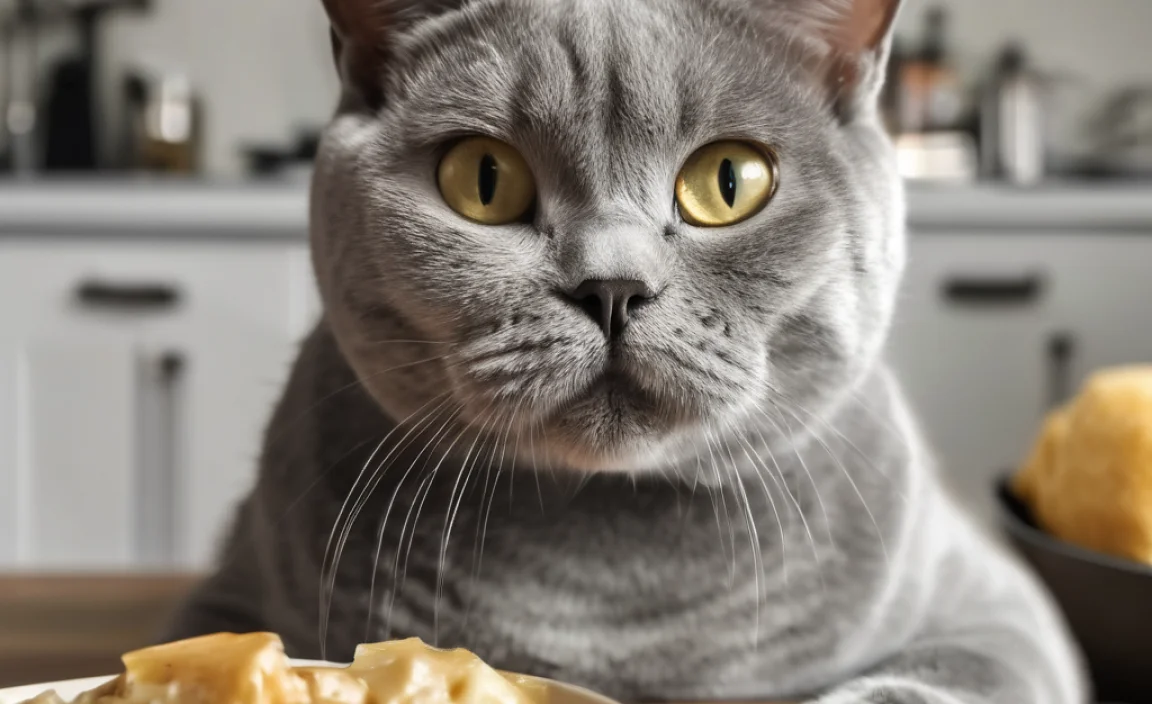
In some cases, your veterinarian may recommend supplements or appetite stimulants to help encourage your British Shorthair to eat. These should only be used under the guidance of a veterinarian, as they can have potential side effects.
Common Supplements:
- Vitamin B12: Can help to stimulate appetite and improve energy levels.
- Omega-3 Fatty Acids: Can improve skin and coat health and reduce inflammation.
- Probiotics: Can help to improve digestion and gut health.
Monitoring Your Cat’s Weight and Body Condition
It’s important to monitor your cat’s weight and body condition to ensure they’re getting enough nutrients. You should be able to feel their ribs easily, but not see them. If your cat is losing weight or appears to be underweight, consult with your veterinarian.
The World Small Animal Veterinary Association (WSAVA) provides a body condition score chart that can help you assess your cat’s weight and body condition.
Patience and Persistence
Dealing with a picky eater can be frustrating, but it’s important to be patient and persistent. It may take time to find the right combination of foods and feeding strategies that work for your British Shorthair. Don’t give up, and remember that your cat’s health and well-being are worth the effort.
When to Seek Professional Help
If you’ve tried all of the above strategies and your British Shorthair is still refusing to eat, it’s time to seek professional help. Your veterinarian can perform additional tests to rule out any underlying medical conditions and may recommend a consultation with a veterinary nutritionist.
British Shorthair Picky Eater Meal Ideas: FAQs
Here are some frequently asked questions about dealing with picky eaters.
Why is my British Shorthair suddenly a picky eater?
Sudden picky eating can be due to stress, changes in routine, or underlying health issues like dental problems or digestive upset. Consult your vet to rule out medical causes.
How can I make my British Shorthair’s food more appealing?
Try warming the food slightly to enhance the aroma, offering different textures, and introducing new flavors gradually. Puzzle feeders can also make mealtime more engaging.
Is it okay to give my British Shorthair human food?
Only certain human foods are safe for cats, and they should be given in moderation. Avoid toxic foods like chocolate, onions, and grapes. Consult your vet before offering any human food.
How often should I feed my British Shorthair?
Divide their daily food ration into several small meals throughout the day. This can be especially helpful for picky eaters or cats with sensitive stomachs.
What are some signs that my British Shorthair is not eating enough?
Signs include weight loss, lethargy, decreased appetite, and a dull coat. If you notice these signs, consult your veterinarian.
Can I mix wet and dry food for my British Shorthair?
Yes, mixing wet and dry food can provide a variety of textures and flavors, which may appeal to picky eaters. Ensure both foods are high-quality and nutritionally balanced.
Are there any supplements that can help with my cat’s appetite?
Vitamin B12, omega-3 fatty acids, and probiotics can help to stimulate appetite and improve digestion. However, always consult your veterinarian before giving your cat any supplements.
Conclusion
Dealing with a picky British Shorthair can be a challenge, but with patience, understanding, and a willingness to experiment, you can find meal ideas and feeding strategies that work for your furry friend. Remember to rule out any underlying health issues, offer a variety of textures and flavors, and create a calm and inviting eating environment. By following these tips, you can transform your picky eater into a happy, healthy diner and enjoy many purrfect mealtimes together.

